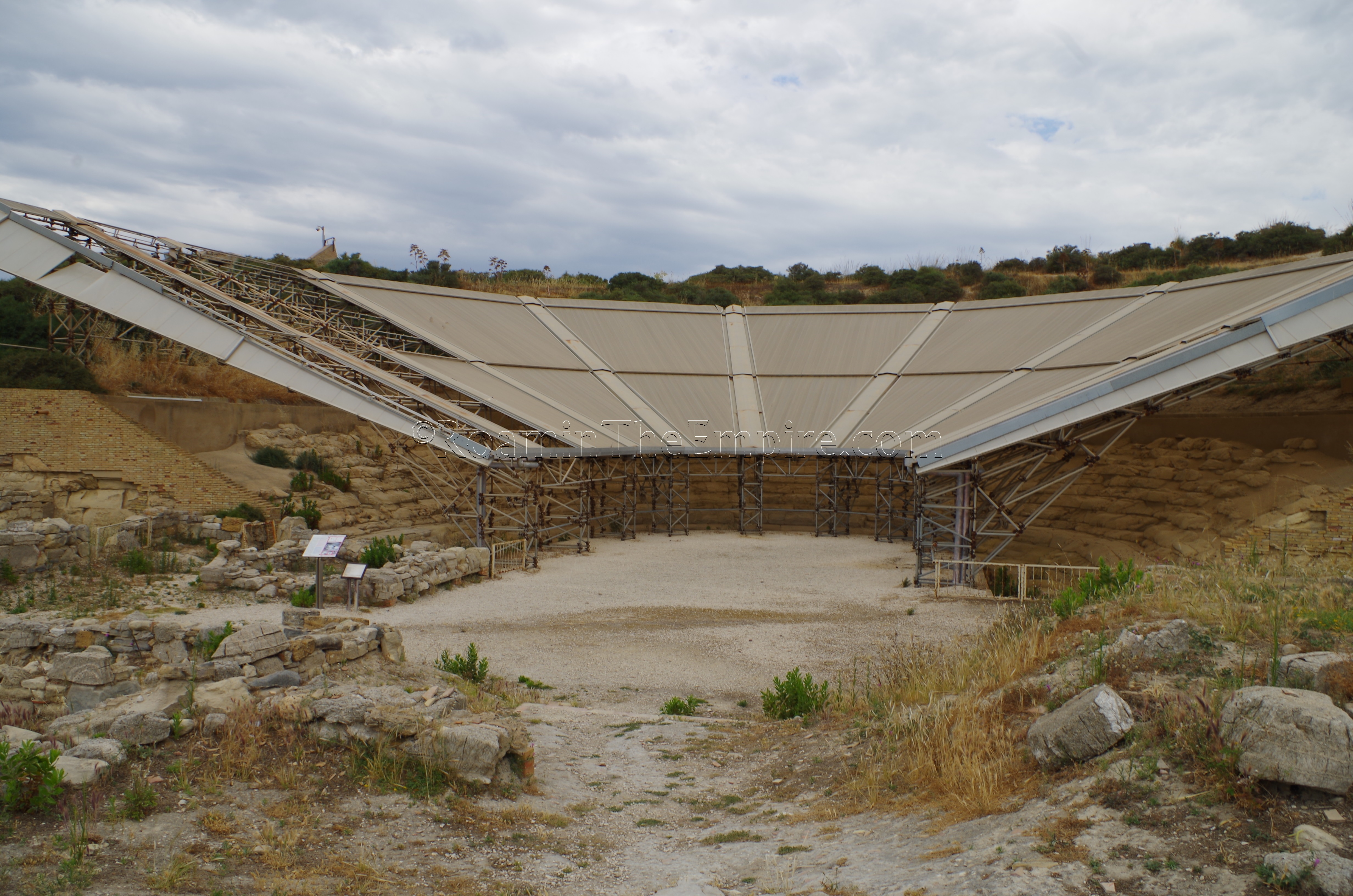
Most Recent Visit: June 2017
The ancient town of Herakleia Minoa was founded in the middle of the 6th century BCE by settlers from Selinus probably as a means preventing expansion by Akragas (Agrigentum). The ancient remains are located near the modern village of Eraclea Minoa, and about 26 kilometers to the west of Agrigento. The two names of Herakleia Minoa seem to have come at different times, with Minoa being the most antique moniker of the town while the Herakleia seems to have been added in the late 4th century BCE. Both of these names appear to have mythological origins to them, with the Herakleia being related to Hercules and possibly the boxing match win over Eryx that gave him dominion over the western half of Sicily. The Minoa seems to have come from King Minos, who apparently came to Sicily in search of Deadalus and landed at the mouth of the Halycus River (modern day Platani River), the location of Herakleia Minoa. It was in this area that he was killed by the daughters of the Sican king Kokalos and his bones were supposedly found there by Theron of Akragas. The spot may have previously been the location of pre-6th century BCE settlement called Macara, though there does not seem to be supporting archaeological evidence for this.
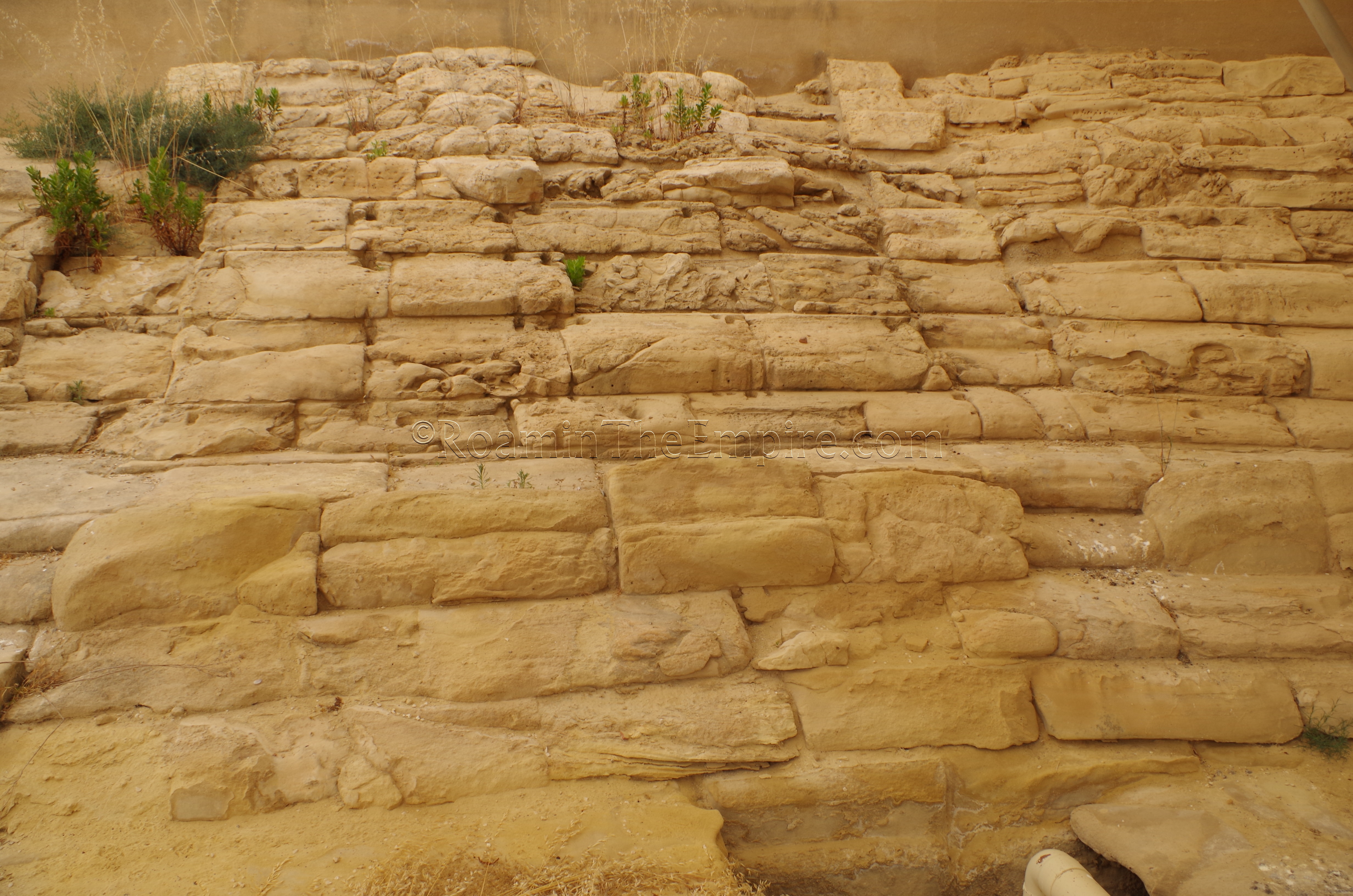
Herakleia Minoa became a focal point of conflict between Selinus and Akragas not long after its founding. Around 510 BCE, a group of Spartans under Dorieus landed in the area of Herakleia Minoa with the goal of capturing western Sicily in the name of the reclamation of the territory that Hercules was given, and promised to his descendants, whom Dorieus counted himself amongst, for his victory over Eryx in the aforementioned boxing match. While Dorieus was defeated by a combined force of the Phoenicians and Segestans, one of his lieutenants, Euryleon, was able to muster a force out of the survivors and captured Herakleia Minoa. It is likely that it was at this time that the Herakleia was added to the name of the city. Euryleon deposed the tyrant Pithagoras in Selinus, but was then himself killed after trying to install himself as tyrant. The town, according to Diodorus Siculus, was quite prosperous after this, but that it was destroyed by the Carthaginians out of jealousy for its success in the early 5th century BCE (probably circa 480 BCE). At the time, the Carthaginians were aligned with the people of Selinus, but Herakleia Minoa was perhaps under Acragan control by that point, and the town may have been destroyed in the conflict between the Carthaginians and Greeks at that time.
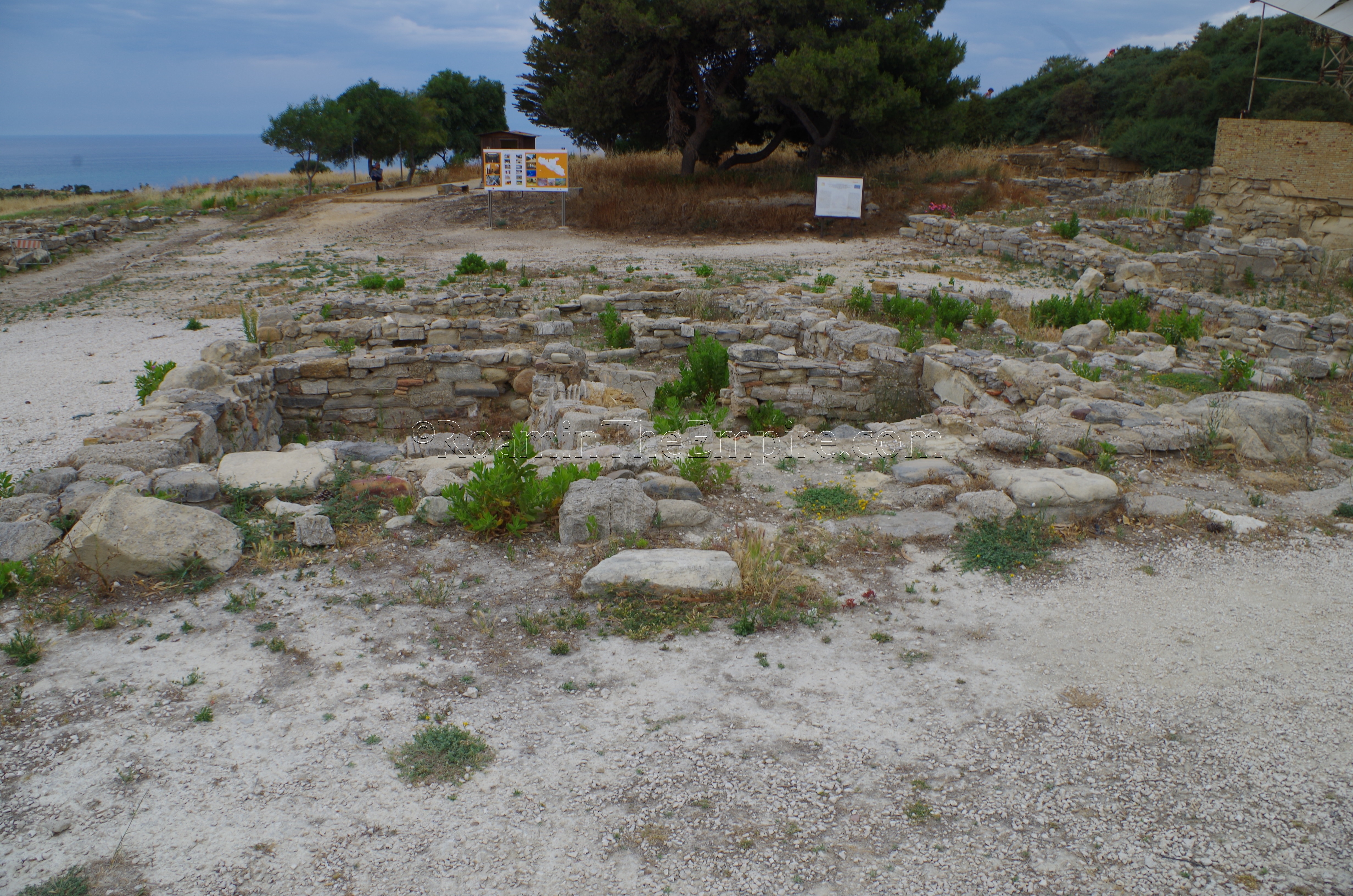
Herakleia Minoa is not mentioned for a long period after the destruction, perhaps because the city was not inhabited at the time, or at the very least was probably experiencing a decline in importance due to the destruction. The Treaty of Syracuse in 405 BCE put the territory of Herakleia Minoa back in the sphere of Carthaginian influence. A treaty between Carthage and Agathocles of Syracuse in 314 BCE reaffirmed the arrangement of the settlement falling under the domain of the Carthaginians. Not long after, in 309 BCE, though, Herakleia Minoa declared itself free of the dominion of both the Carthaginians and Agathocles when Xenodocus of Akragas led an armed movement to free the Sicilian cities of the influence of the two competing powers on the island. It was recaptured by Agathocles in 305 BCE and once again fell under the influence of Syracuse.
Sometime between its capture by Agathocles in 305 BCE and the Pyrrhic Expedition in 278 BCE, Herakleia Minoa returned to the hands of the Carthaginians, and it was one of the first Punic holdings captured by Pyrrhus in his campaign against the Carthaginians. When the Greeks and native Sicilians turned against Pyrrhus and he was driven from the island due to his increasing demand upon the inhabitants in supporting his campaign, abandoning his quest against the Carthaginians, Herakleia Minoa, once again, returned to the sphere of Carthaginian influence. It remained in Carthaginian hands until the First Punic War.
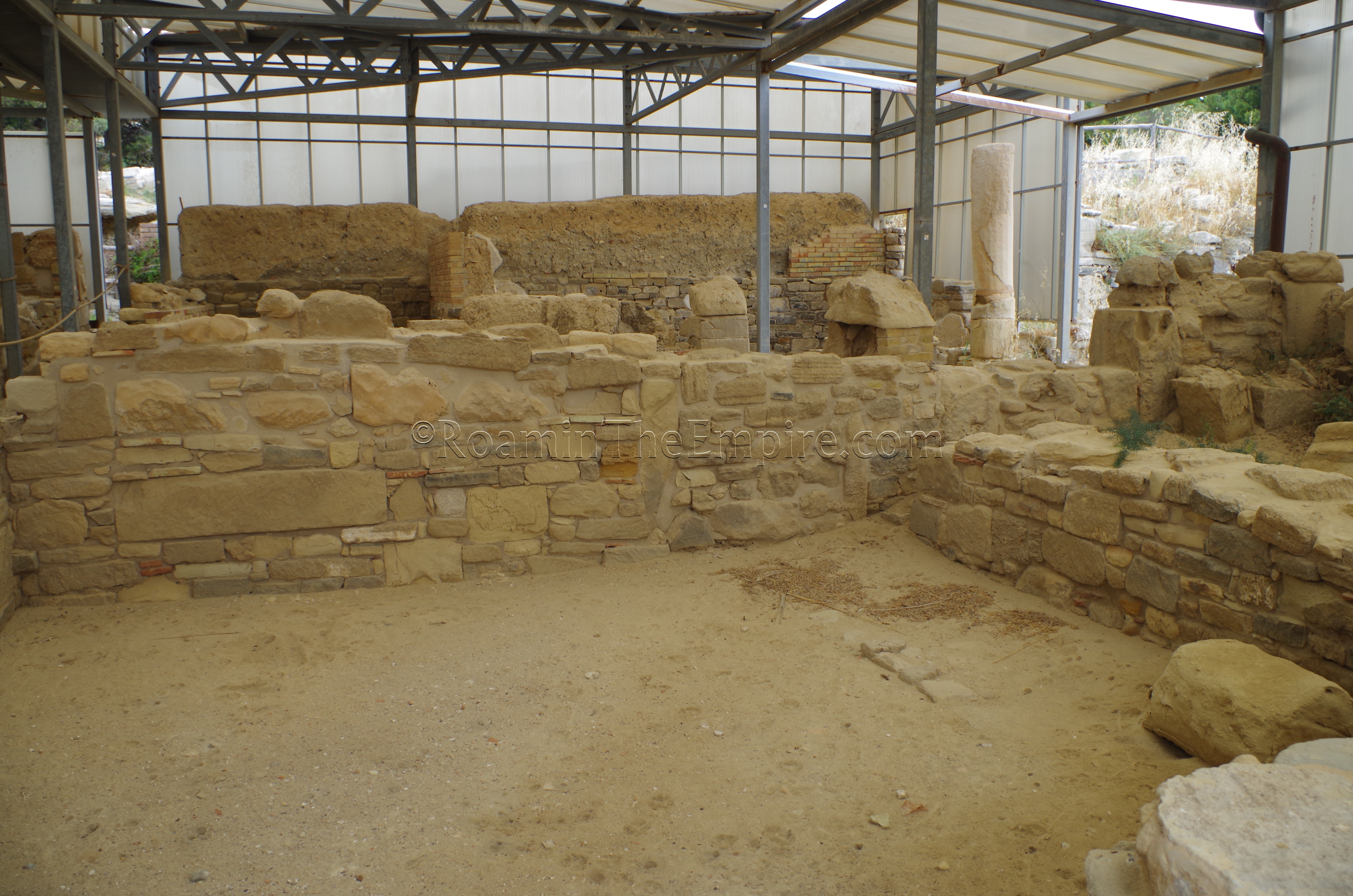
When the First Punic War broke out between Carthage and Rome, Herakleia Minoa played a relatively significant role in the conflict as a naval base for the Carthaginians. Early in the war, Rome advanced on and besieged the nearby city of Akragas (Agrigtentum) in their opening moves against the Carthaginians in 262 BCE. As the situation at Akragas became dire late in 262 BCE, a relief force from Carthage was sent under the command of Hanno, which landed at Herakleia Minoa and used the settlement as a base to organize an operation against the besieging Romans. The Carthaginians lost the battle at Akragas, but Herakleia Minoa seems to have remained in Carthaginian hands, even though Akragas was briefly taken by the Romans. In 256 BCE, Herakleia Minoa served as the naval station for a Carthaginian fleet that was tasked with preventing a Roman incursion to Africa. This endeavor was largely unsuccessful as a Roman naval victory against this fleet by Marcus Atilius Regulus and Lucius Manlius Vulso Longus at Cape Ecnomus allowed a, ultimately unsuccessful, Roman expedition in Africa. Around 250 BCE, Herakleia Minoa was razed by a Roman naval force on their way to Lilybaeum, but the following year was again used as a naval station for a fleet, this time to watch for Roman naval forces attempting to join the Roman land siege of Lilybaeum. Whether or not Herakleia Minoa was ever occupied by the Romans during the First Punic War is unclear, but at the conclusion in 241 BCE, the settlement, along with all the other Carthaginian holdings on the island, passed to the Romans.
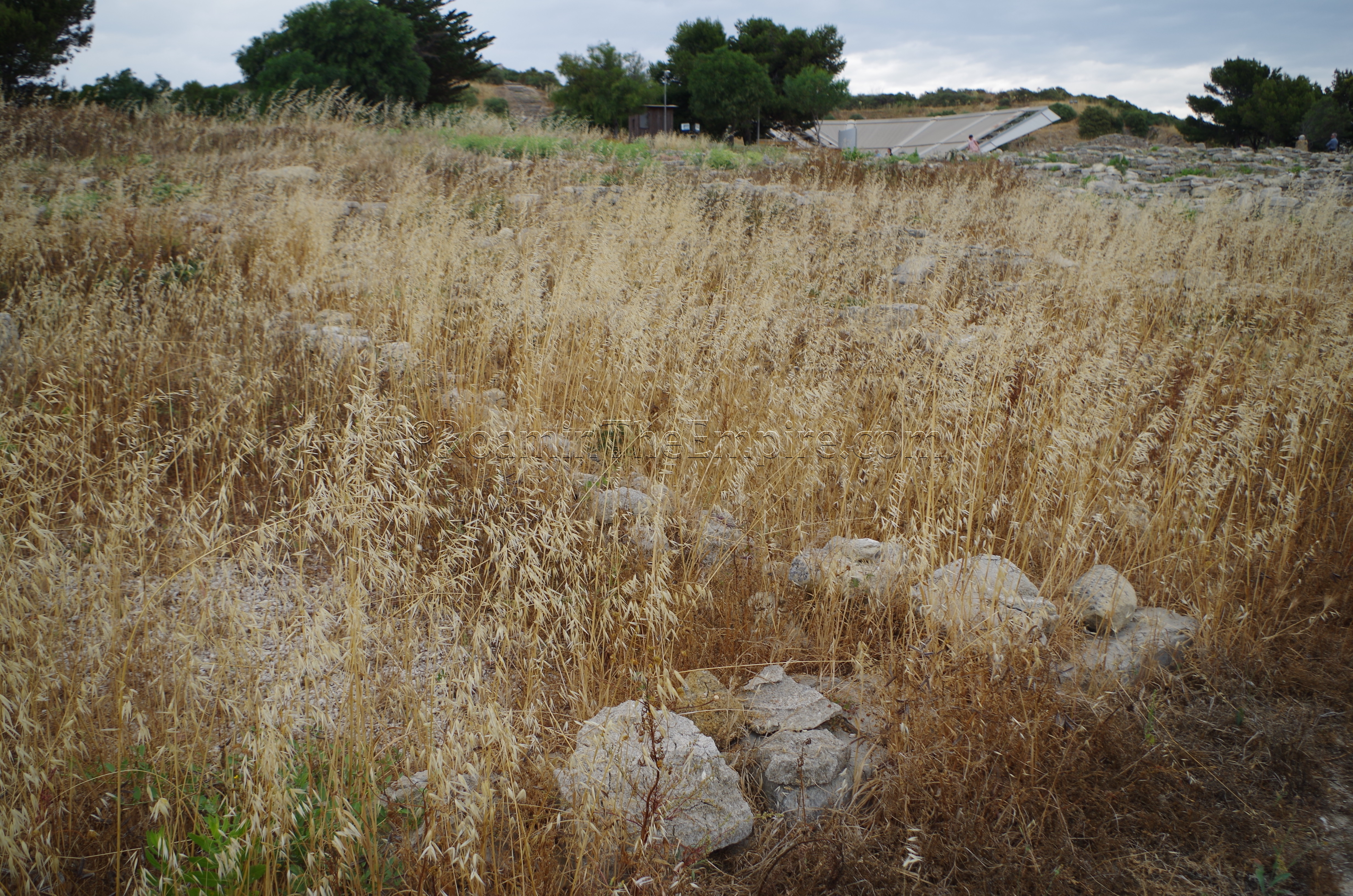
During the course of the Second Punic War, Herakleia Minoa was once again occupied by the Carthaginians. In 213 BCE, a Carthaginian army under the command of Himilco landed at, and captured, Herakleia Minoa on their way to relieve the Carthaginian forces at Syracuse, which was besieged by the Romans. The settlement seems to have remained under Carthaginian control until 210 BCE when the Romans permanently drove the Punic forces from the island. The town gets a few mentions during the Roman period; some kind of destruction befell the city during the First Servile War as the proconsul Publius Rupilius had to send a new body of settlers to colonize the city. During the time of Cicero, the city was still active and prosperous, but appears to have been largely abandoned in the latter stages of the 1st century BCE, possibly because of the prevalence of malaria. The absence of any Italian red-gloss sigillata at the site would seem to indicate that Herakleia Minoa was abandoned by the last quarter of the 1st century BCE.
Getting There: The modern village of Eraclea Minoa is not especially accessible without a private vehicle. There is no direct bus service to the town, but there is bus service between Sciaccia and Agrigento a few times daily on the Salvatore Lumia bus line. This bus line runs on the SS115 highway that runs between the two cities and passes within a few kilometers of Eraclea Minoa. Apparently it is possible to have the bus stop at the SS115 and SP30 junction, and then to either to walk to the archaeological site (4 kilometers and approximately 50 minutes) or arrange some sort of private transport. Fortunately, while the Agrigento to Sciaccia buses are all in the morning, there are afternoon buses from Sciaccia to Agrigento, actually making it possible to do in a day trip from Agrigento. The trip between the junction and Agrigento is about 45 minutes. The price listed on the website is for the full trip between the two cities, which is about 7 Euros each way and 11 Euros round trip, but a partial journey may cost less. The schedule for the buses is available here.
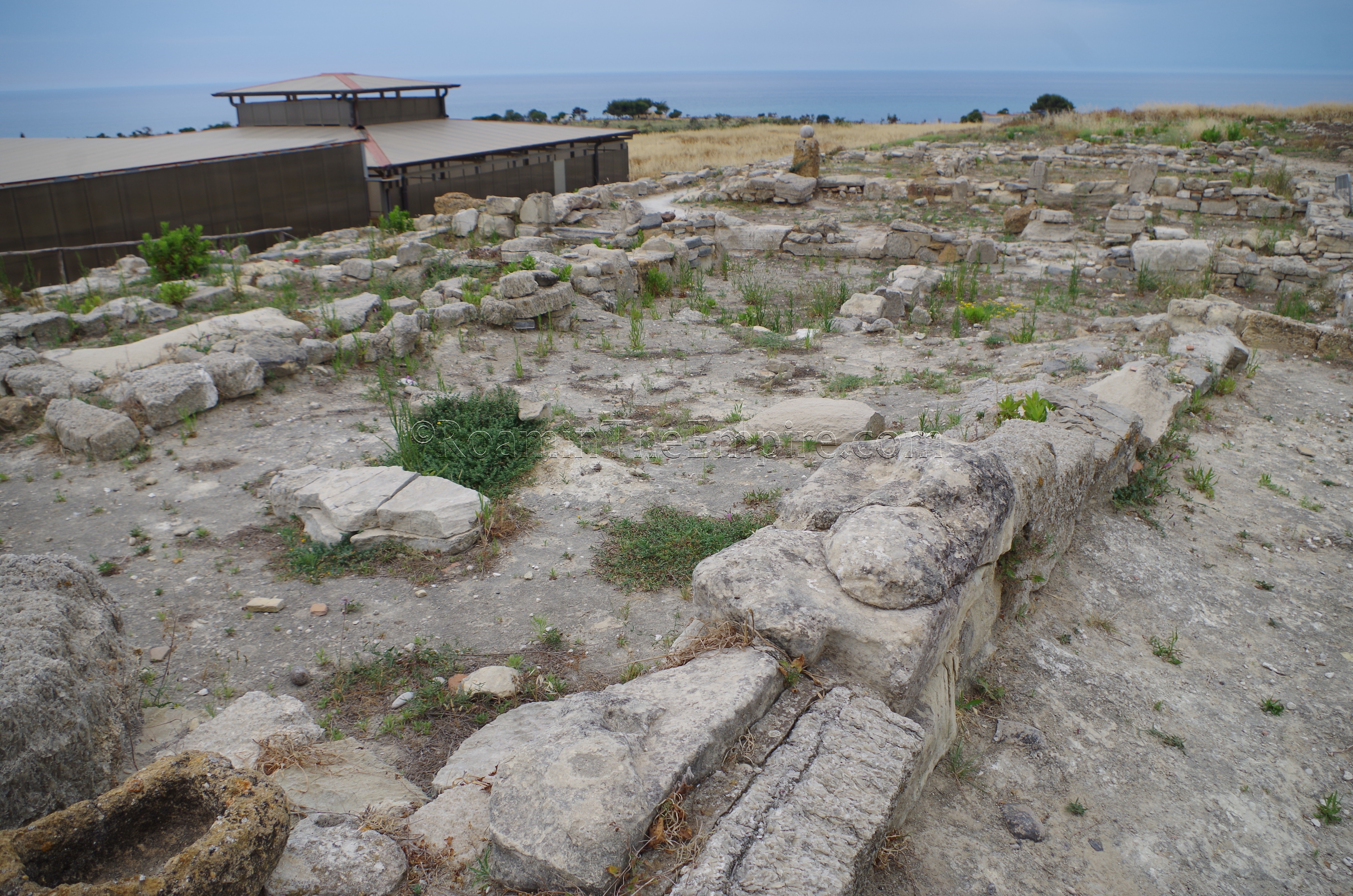
The archaeological site doesn’t really have an address, but rather just an area identification: Contrada Minoa, 92011 Cattolica Eraclea, Agrigento. The village is very small and the archaeological site is to the west of the village, on a raised headland, along Strada Provinciale 30; the right fork in the road if coming from the highway. The site is open from 9:00 to 19:00 in the summer, and from 9:00 to 16:30 in the winter (November through February). There are no specific closing days listed for the site, but, be aware that it could be closed Sunday and/or Monday. It doesn’t seem to be an exceptionally well-visited site, so, it wouldn’t be surprising. Admission is 4 Euros.
The site itself is not exceptionally large; there is a decent amount excavated, but much of it has no signage or context displayed and seems to be domestic structures. Visiting early in the season, much of the site away from the core of the few well-documented houses and the theater was overgrown with tall grass. Have still not been reunited with my shoes at this point, tromping through the grass was a bit inadvisable, and honestly there wasn’t much to see.
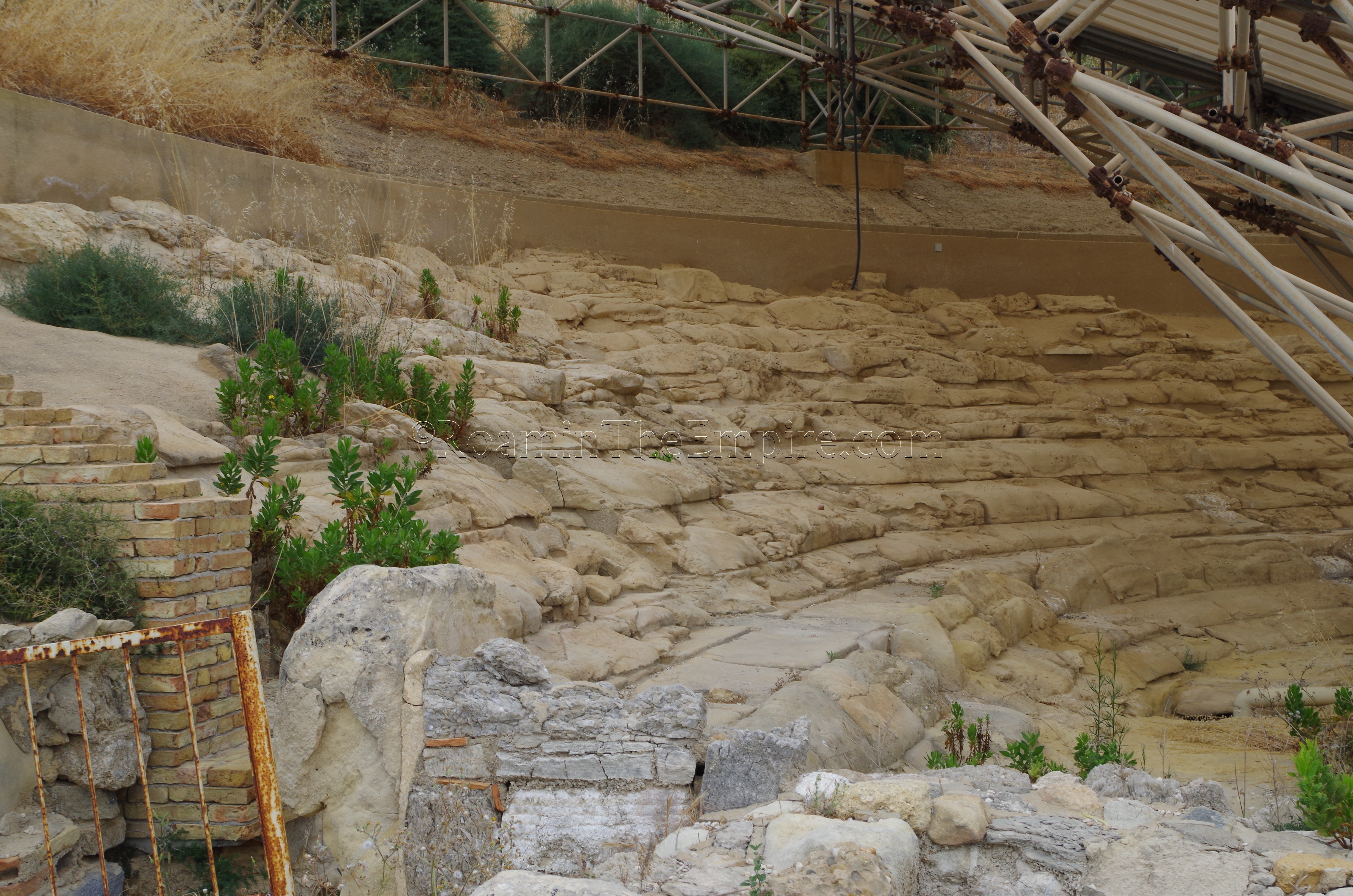
The theater, situated near the entrance, is easily the centerpiece of the site. The theater is built into the side of a hill, using the natural topography to support the seating, as is the norm with Greek style theaters. The theater seems to have been built sometime in the 4th century BCE, but has also been dated as late as the beginning of the 3rd century BCE. The life of the structure is relatively brief, though, as the placement of some later structures abutting the theater indicates that it probably fell out of use in the late 2nd century or early 1st century BCE. Currently the theater is housed under a protective awning; the marl of which it is constructed is particularly susceptible to the ravages of the weather. The adverse effect that weather can have can be seen on the blocks, which have an almost ‘melted’ appearance due to (judging by pictures from the excavation in 1951) weathering both since excavation and prior. There are some other unprotected blocks of the marl around the excavation, illustrating what could further happen with the theater if left unprotected. Unfortunately, the awning that protects the theater also obstructs much of the overall view of it.
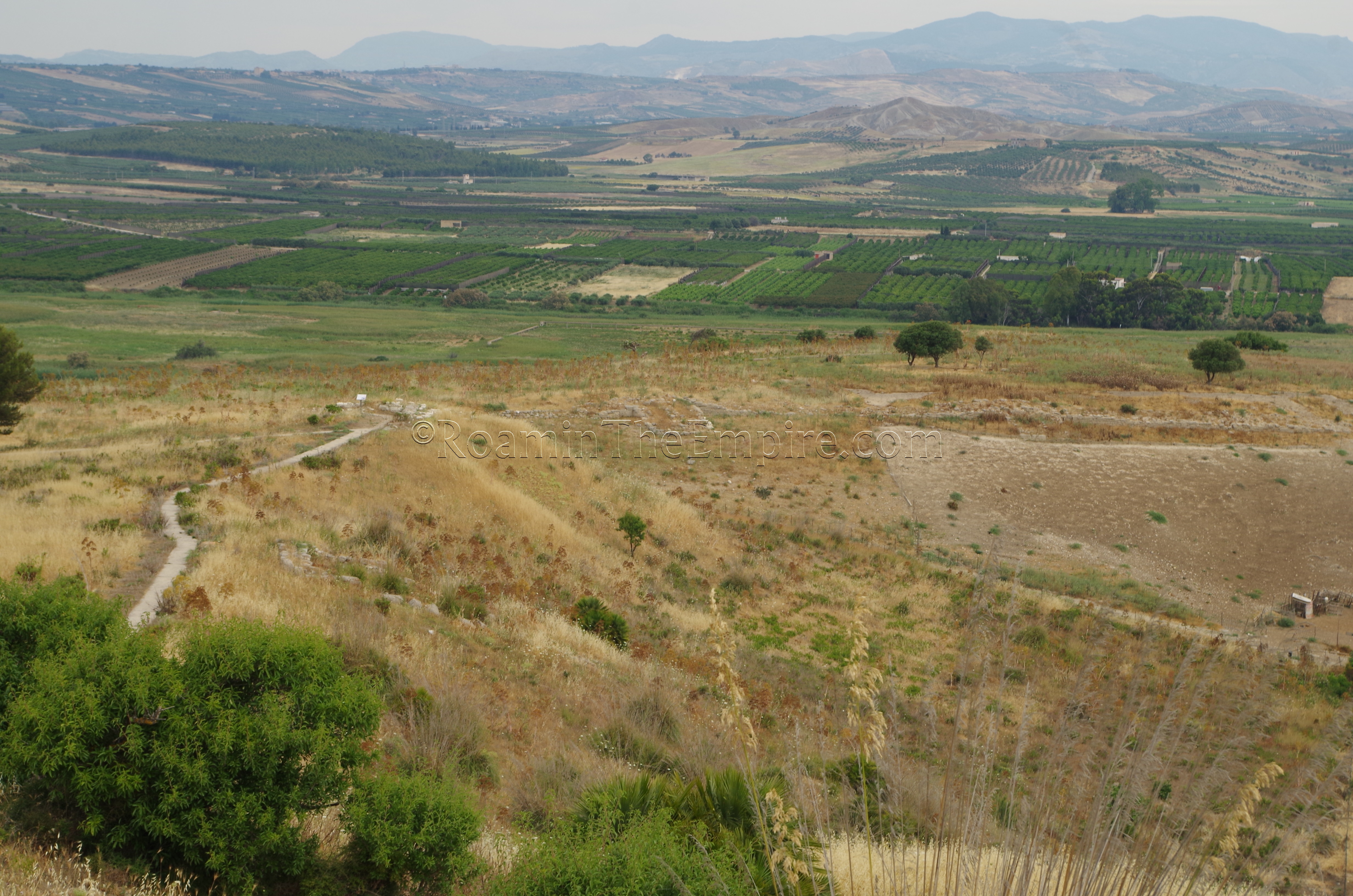
To the north of the theater, over or around the hill into which it is built, some far-flung remains of the northern part of the city walls. There is a path that leads out to these sections of the walls, but, there is also a pretty good view of the fortifications from the top of the hill. Additionally, a stretch of the eastern walls of the city is also visible south of the theater, running directly along the residential district that is excavated. These walls seem to have two phases of construction, first starting in the 3rd to 2nd century BCE when the city seems to have experienced a significant decrease in size and necessitated a reduction in the walls, and the second being in the time after the city suffered a destruction in the First Servile War, sometime around 133 BCE.
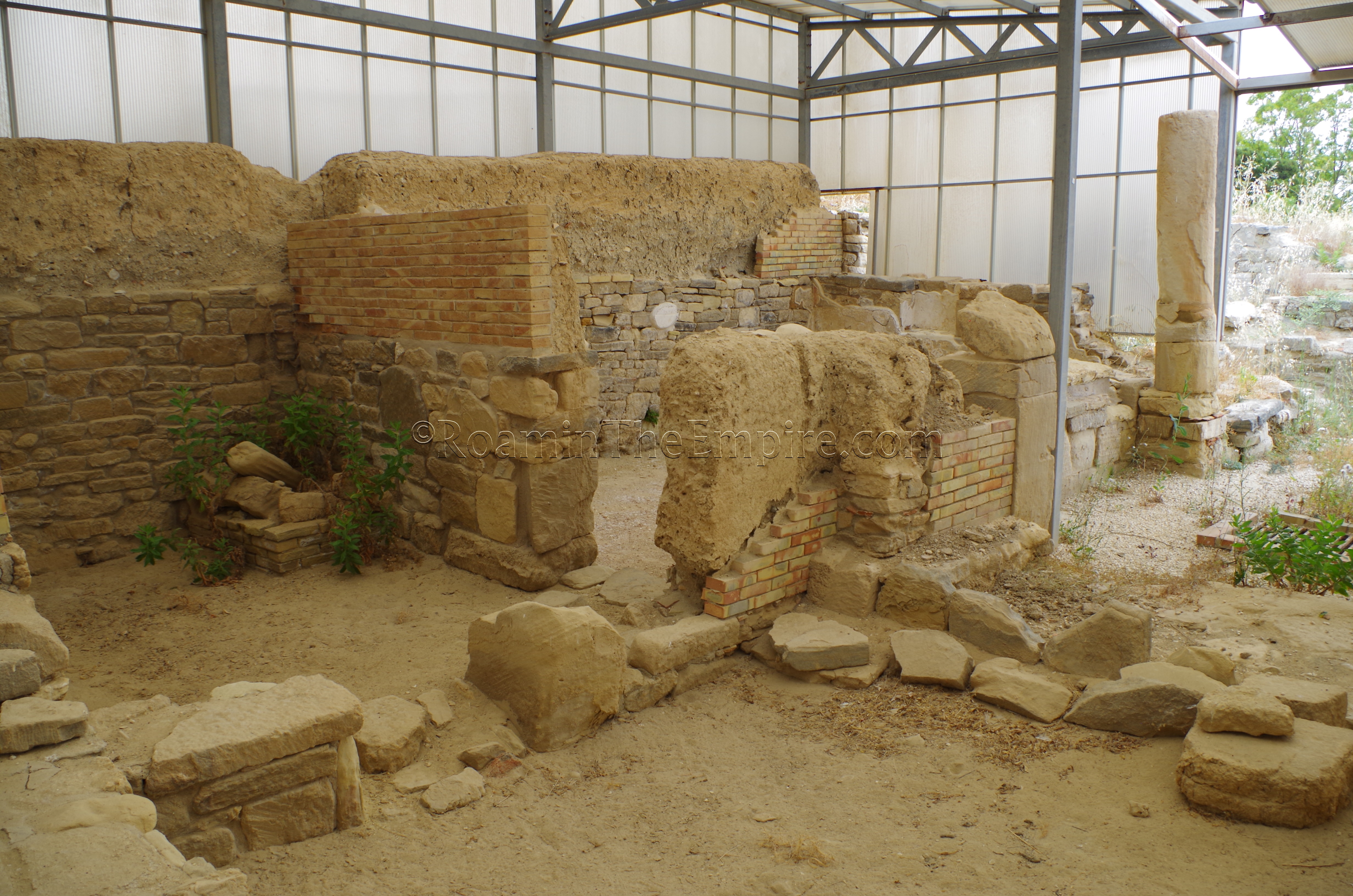
Other than the wall and the theater, much of the rest of the site seems to be domestic structures. There are a few areas that are specifically delineated as houses, but, the vast majority of the site has no kind of signage that discusses the use of the space. There are a few houses to the south of the theater that are actually covered to protect them from the elements, and there is a bit written about them. The documented houses (and by documented, I mean the ones that have signs) range in date to generally similar time periods as the city wall constructions; either in the 4th to 3rd century BCE, or in the 2nd to 1st century BCE. All date to after the Romans took over control of the city. The enclosed houses have some plastered wall facing remaining, and some of the walls seem to be of an almost mud/adobe type construction in some areas. The houses in the area have alphanumeric designations, the numeric part indicating whether it is the later building period (2) or the newer building period (1). Unfortunately the signs are faded (particularly the plans) and it is difficult to discern the structures from each other, but the two covered dwellings belong to the older building phase.
There is a small antiquarium/museum on site, but, it’s mostly typological assemblages of fairly common materials. It’s interesting in the dating and stratigraphy of the site, but, much of the more important material and interesting finds are housed at the archaeological museum in Agrigento. Like the rest of the site, much of the sparse signage was in Italian, so, any foreign visitors might have a little trouble in interpreting what is there.
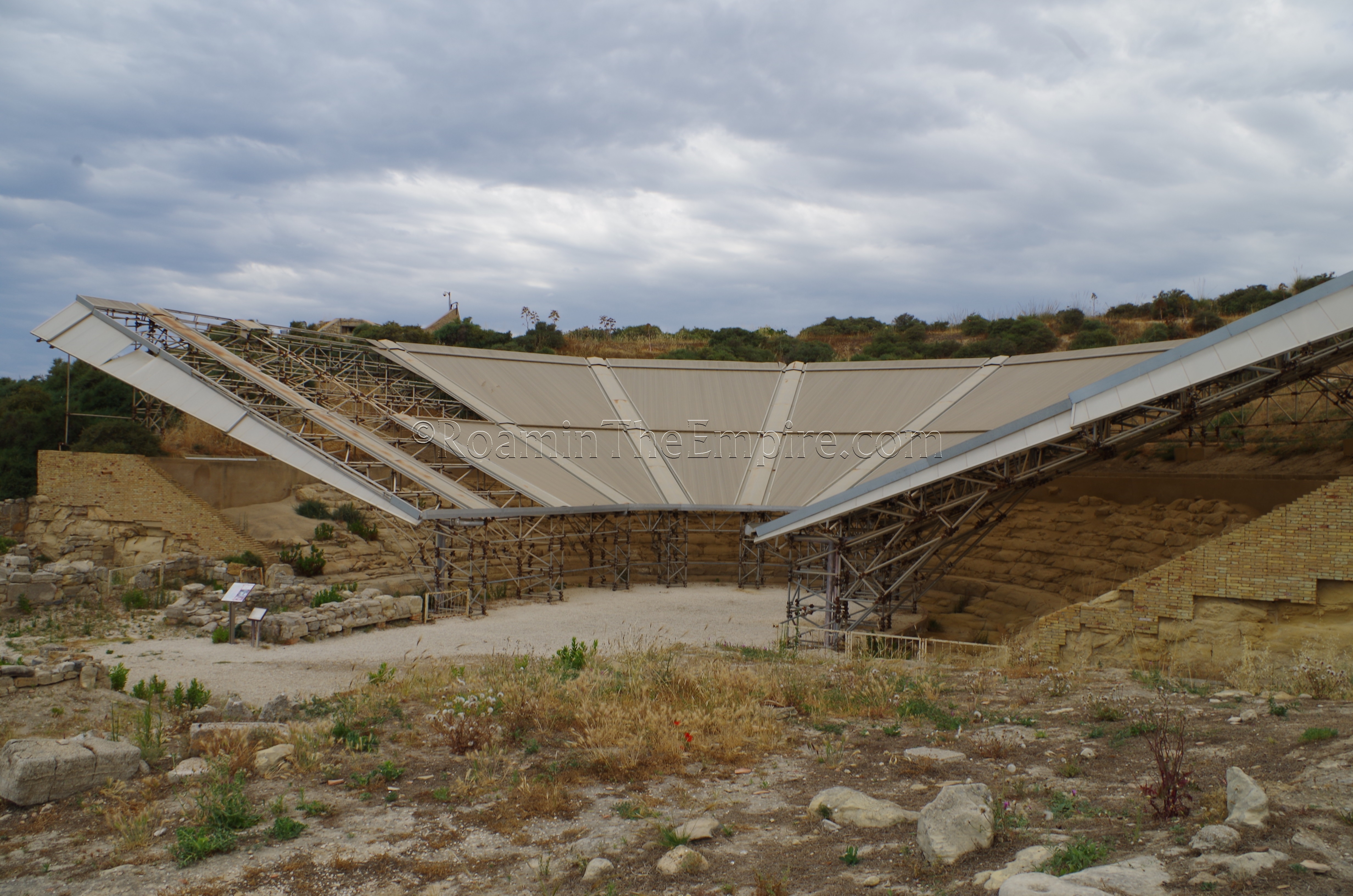
Overall, the site is quite interesting, but, the fact that it is difficult to reach without a private vehicle and that the documentation at the site, and therefore the context of much of the remains, is not very extensive, it’s hard to put this at the top of the list of things to see. With a private vehicle, it’s certainly worth the stop, as it only took me an hour to see everything, and honestly, it could probably be done in less time. The theater is interesting to see mostly because of the construction material and the way it has worn over the interceding millennia, and the preserved houses are fairly interesting as well, but, given the proximity to Agrigento, it might fall a bit on the strength of draw for the area. More signage explaining some of the remains would go a long way in increasing the overall appeal of the site.
Sources:
Cicero, In Verrem, 2.50.
Diodorus Siculus, Bibliotheca Historica, 4.23.3, 13.114, 19.71, 20.56, 23.8.
Herodotus, Histories, 5.42-46.
Holloway, R. Ross. Archaeology of Ancient Sicily. Routledge, 1991.
Livy, Ab Urbe Condita, 24.35, 25.27, 25.40-41.
Polybius, Historia, 1.18-19, 1.25-29, 1.53.
Smith, Christopher John. Sicily from Aeneas to Augustus: New Approaches in Archaeology and History. Edinburgh Univ. Press, 2007.
Stillwell, Richard, William L. MacDonald, and Marian Holland. McAllister. The Princeton Encyclopedia of Classical Sites. Princeton, NJ: Princeton U Press, 1976.
Wilson, R. J. A., and A. Leonard. “Field Survey at Herclea Minoa (Agrigento), Sicily.” Journal of Field Archaeology, vol. 7, no. 2, 1980, pp. 219–239.


